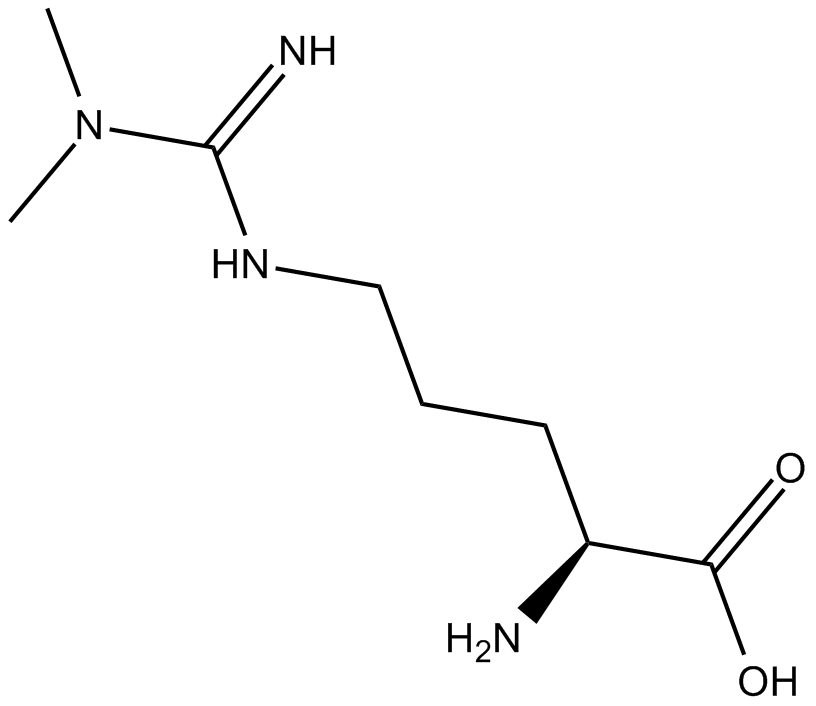NG,NG-dimethyl-L-Arginine (hydrochloride) (Synonyms: ADMA) |
| Catalog No.GC17237 |
endogenous nitric oxide synthase inhibitor
Products are for research use only. Not for human use. We do not sell to patients.

Cas No.: 220805-22-1
Sample solution is provided at 25 µL, 10mM.
NG,NG-dimethyl-L-Arginine is an endogenous nitric oxide synthase inhibitor.
Nitric oxide (NO) that is synthesised from L-arginine contributes to the regulation of blood pressure and to host defence.
In vitro: NG,NG-dimethyl-L-Arginine (ADMA) was found to be able to inhibit macrophage and vascular NO synthase. When added to a cytosolic preparation of macrophage NO synthase, ADMA could cause dose-dependent inhibition of NO formation. In the presence of added arginine, ADMA could inhibited NO synthesis and the inhibitory effects of ADMA were prevented by addition of L-arginine so that the rate of NO synthesis did not significantly differ from control values [1].
In vivo: Animal study showed that the injection of 1-30 mg/kg ADMA into 3 anaesthetised guineapigs could cause dose-dependent increases in mean arterial blood pressure. Moreover, during continuous infusion of ADMA, which caused plasma ADMA concentrations to rise approximately 9-fold, the systolic blood pressure was raised by nearly 15 % [1].
Clinical trial: Local infusion of ADMA into the brachial artery of healthy volunteers caused a dose-dependent fall in forearm blood-flow. Infusion of ADMA for 5 min resulted in a fall in forearm blood-flow in 5 subjects, and the effects of this ADMA dose were significantly attenuated by infusion of L-arginine [1].
Reference:
[1] Vallance, P. ,Leone, A.,Calver, A., et al. Accumulation of an endogenous inhibitor of nitric oxide synthesis in chronic renal failure. Lancet 339, 572-575 (1992).
Average Rating: 5 (Based on Reviews and 19 reference(s) in Google Scholar.)
GLPBIO products are for RESEARCH USE ONLY. Please make sure your review or question is research based.
Required fields are marked with *




















